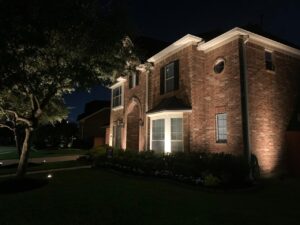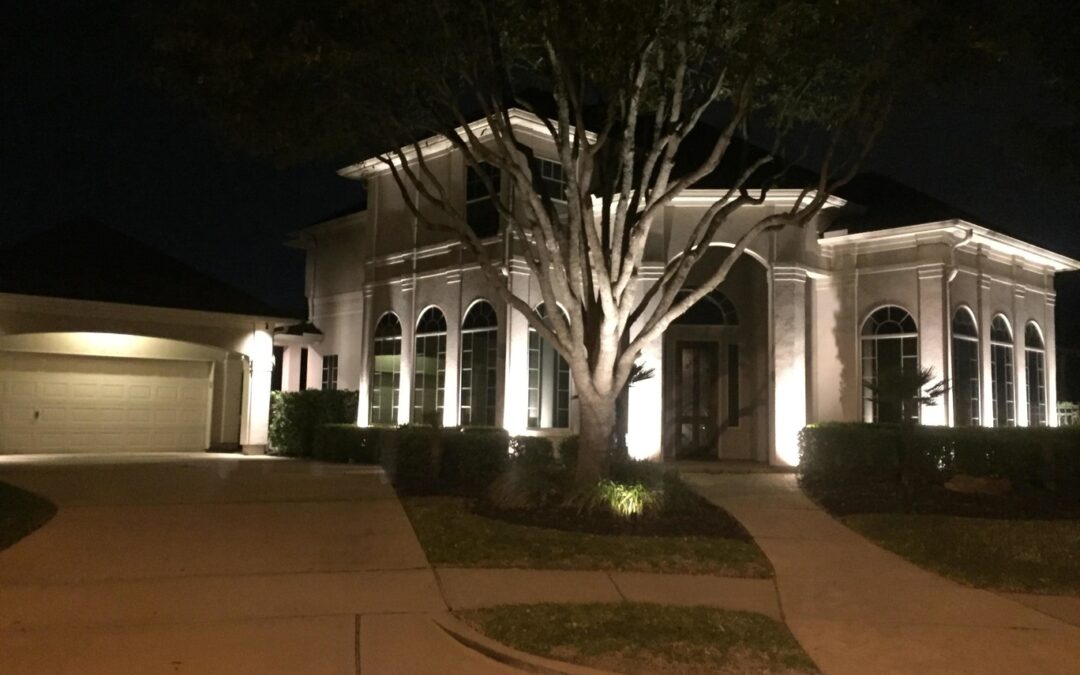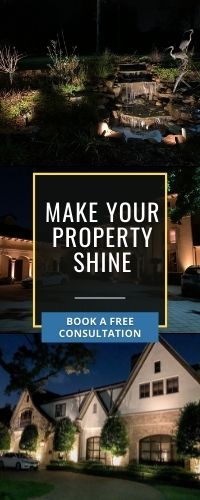The world of landscape lighting is vast and creative. There are so many opportunities to bring a property to life with strategically placed lighting in a variety of styles. If you’re considering outdoor lighting for your home or business, it’s best you learn about the different types of landscape lighting and which styles are best suited to you.
Uplighting

Uplighting is one of the most popular forms of outdoor lighting. It is used to add drama and boldness to a property. It involves placing a lighting fixture low to the ground and angling it upward. This form of lighting is used to create various effects on a home or business. Some of these effects include…
- Silhouetting – Silhouette lighting uses the strategic placement of an uplight behind a tree, or sculpture or other feature. By placing lighting behind, facing a wall, the silhouette of the feature will be emphasized with a halo effect. Light softly illuminated behind the feature will push the shape of the tree or feature into the foreground.
- Shadowing – As opposed to silhouetting, with shadow lighting, uplighting is placed in front of a tree or feature. This casts the shadow of the object on top of a wall or fence, or other flat surface. It’s a popular technique for lighting designers to use for shrubbery and plants, as the movement created within the shadows from the plants moving in the wind is breathtaking. You can play with this technique by alternating how the uplights are angled and how many there are.
- Accenting – This is used to feature an object, such as trees, statues, and water features. The technique creates contrast between the object and shadows. The fixture is usually minimal or hidden so that it doesn’t detract from the feature itself. This can be done through the use of uplighting, or in some cases, downlighting.
Downlighting
This is one of the common different types of landscape lighting. In opposition to uplighting, downlighting places the light source above the desired feature or area you are looking to illuminate. This adds a washing of light downward, creating a stunning, more natural lighting effect. It is easy to conceal these fixtures as you can hide them in a tree or underneath other architectural features on your home or property. It can be used to light up broader areas in your yard than uplighting, as the wash illuminates more surface area.
Moonlighting
Moonlighting is a gorgeous technique that recreates the lighting appearance cast by the moon. Like downlighting, it is placed from above, illuminating the ground below. While other forms of lighting can be more targeted towards a specific feature, moonlighting can cover more surface area, and create an overall wash of natural-like light. These lights are typically placed amongst tree branches and leaves, cast through the foliage. Moonlighting is an easy way to add an ethereal glow to your property that fits in seamlessly with nature.
There are many different types of landscape lighting to choose from. Working with an experienced lighting designer can help you identify where you need lighting and what style will achieve the results you desire. If you want to learn more about landscape lighting for your property, set up a free at-home demonstration, where you can see first hand what moonlighting, downlighting and uplighting look like. You can schedule your demo here.


